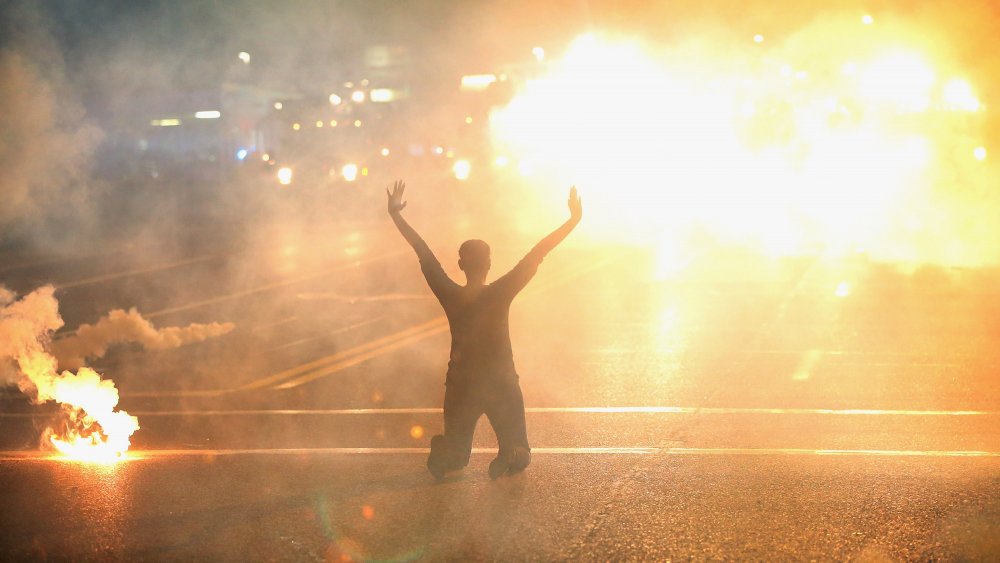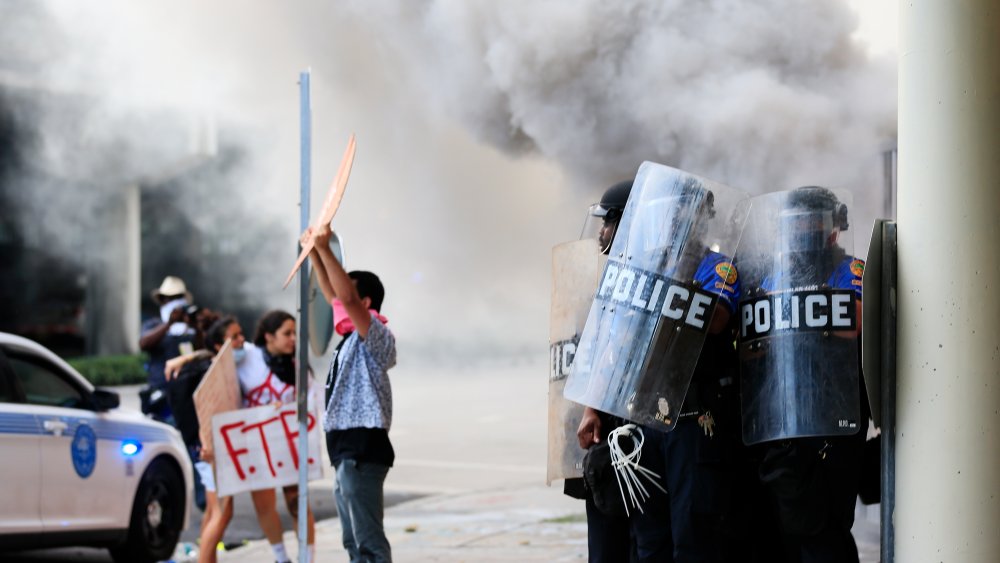The Truth About Pepper Balls
Pepper Balls fall under what the Centers for Disease Control and Prevention (CDC) classifies as "Riot Control Agents." Sometimes they get lumped together and called the same thing, kind of the way facial tissue always gets called Kleenex, no matter what brand it is. Tear gas — composed of 2-chlorobenzalmalononitrile, for you chemistry fans out there; also called CS, utilizing the initials of the two chemists who came up with the formula — was invented back in 1928, says Vox, but it grew out of a compound used on the battlefields of World War I. Anna Feiganbaum, author of the book Tear Gas: From the Battlefields of World War I to the Streets of Today, told Vox that the principle of tear gas quickly moved from military applications to civilian crowd control after the war, in part because it's so very, very effective, and in part because it's "bloodless."
"But what has really changed is the ways that tear gas is deployed," she said. "So that can be either an aerosol form of CS or it can be a pepper spray. They put all different kinds of chemicals in there."
The net result is incapacitating large groups of people through chemical dispersal. As the CDC explains, classic tear gas will "temporarily make people unable to function by causing irritation to the eyes, mouth, throat, lungs, and skin." Technology changes constantly, but the gas is often dispersed through canisters — projectiles fired or thrown toward a crowd of people.
Non-lethal crowd control does not mean painless
Although they look more playful, and have the word "ball" in the title, the same net effect results from the use of PepperBalls. They're fired by what look like paintball guns, and look like paintball ammunition. Getting shot with one is similar to getting hit with a paintball — it stings and can raise a welt. The manufacturer calls the product "non-lethal protection you can always count on." The balls contain a compound that's similar to tear gas, as The Washington Post explains. Once fired, the balls burst and emit a 12-foot cloud that attacks the eyes, nose, and respiratory system of anyone unfortunate to encounter it.
Unlike tear gas canisters, which affect a wide area, PepperBalls offer target awareness, fired directly at individuals. The balls hit the person and burst, dispersing the chemical agent, oleoresin capsicum, which is similar to that found in individualized pepper sprays. Canisters can sometimes cause fire; there are instances of individuals picking them up and throwing them back. That can't happen with PepperBalls, according to Fast Company. The effects last longer, too — once the substance is removed from the body, the senses still suffer anywhere from 20-90 minutes longer.

